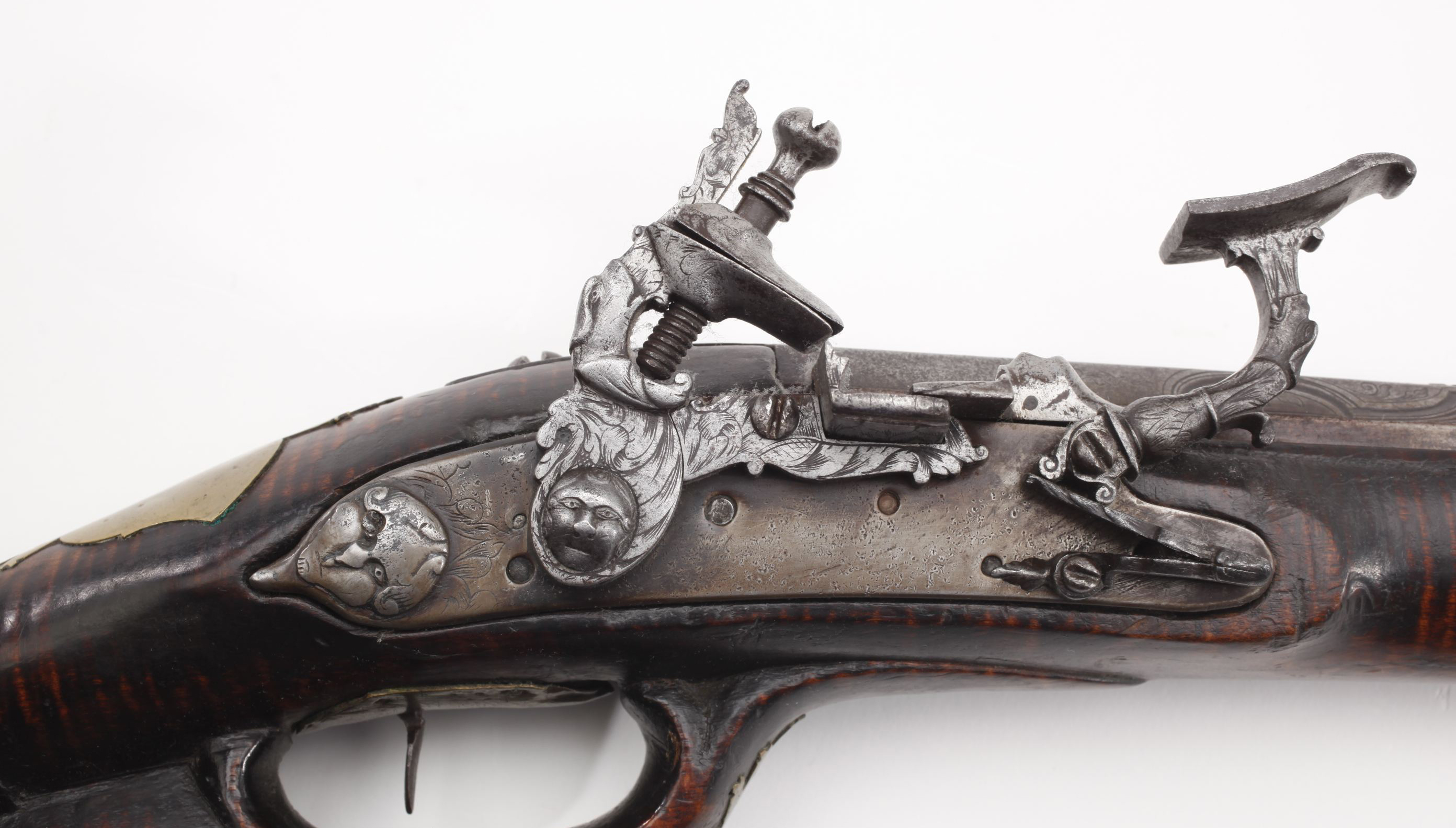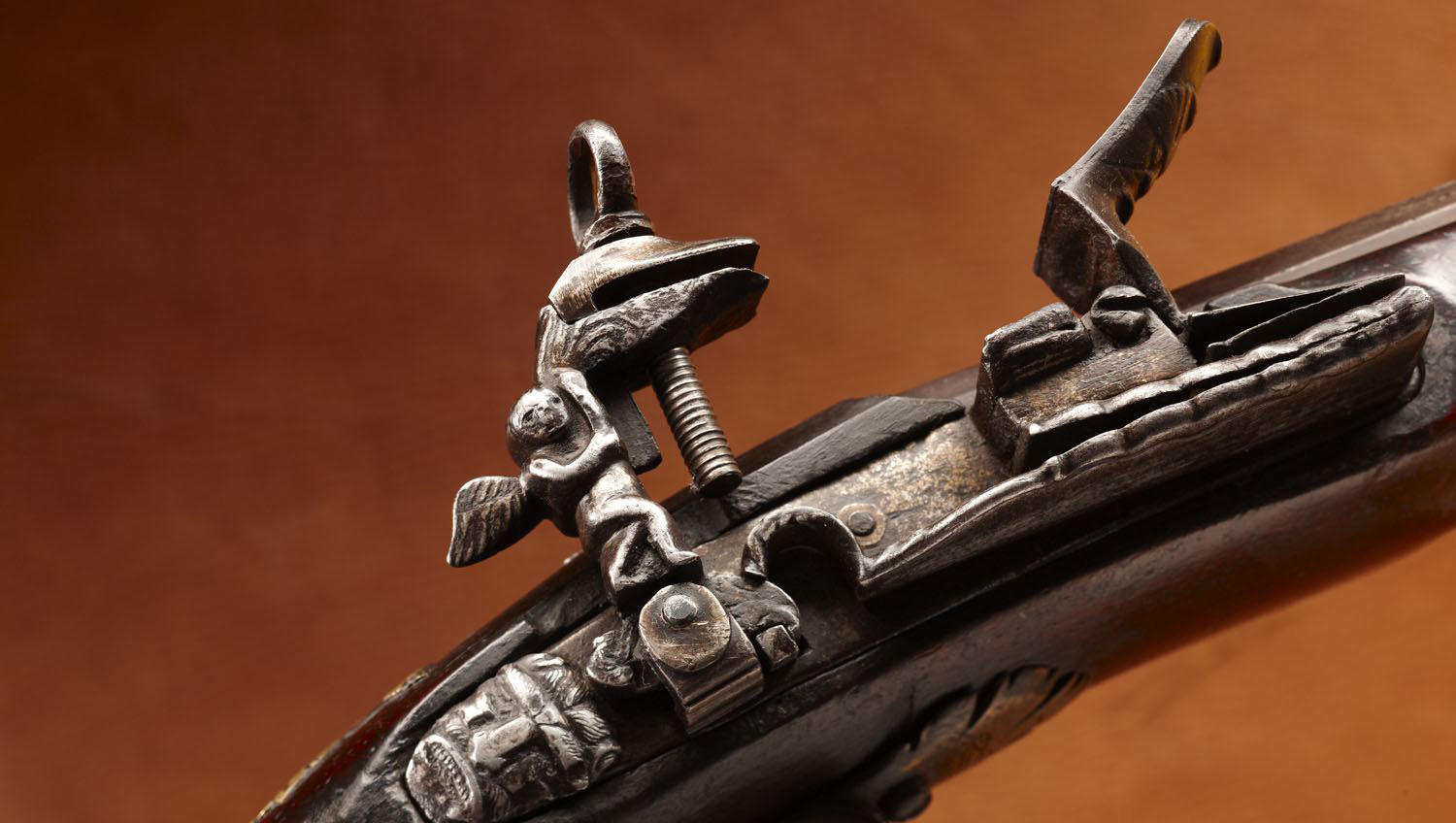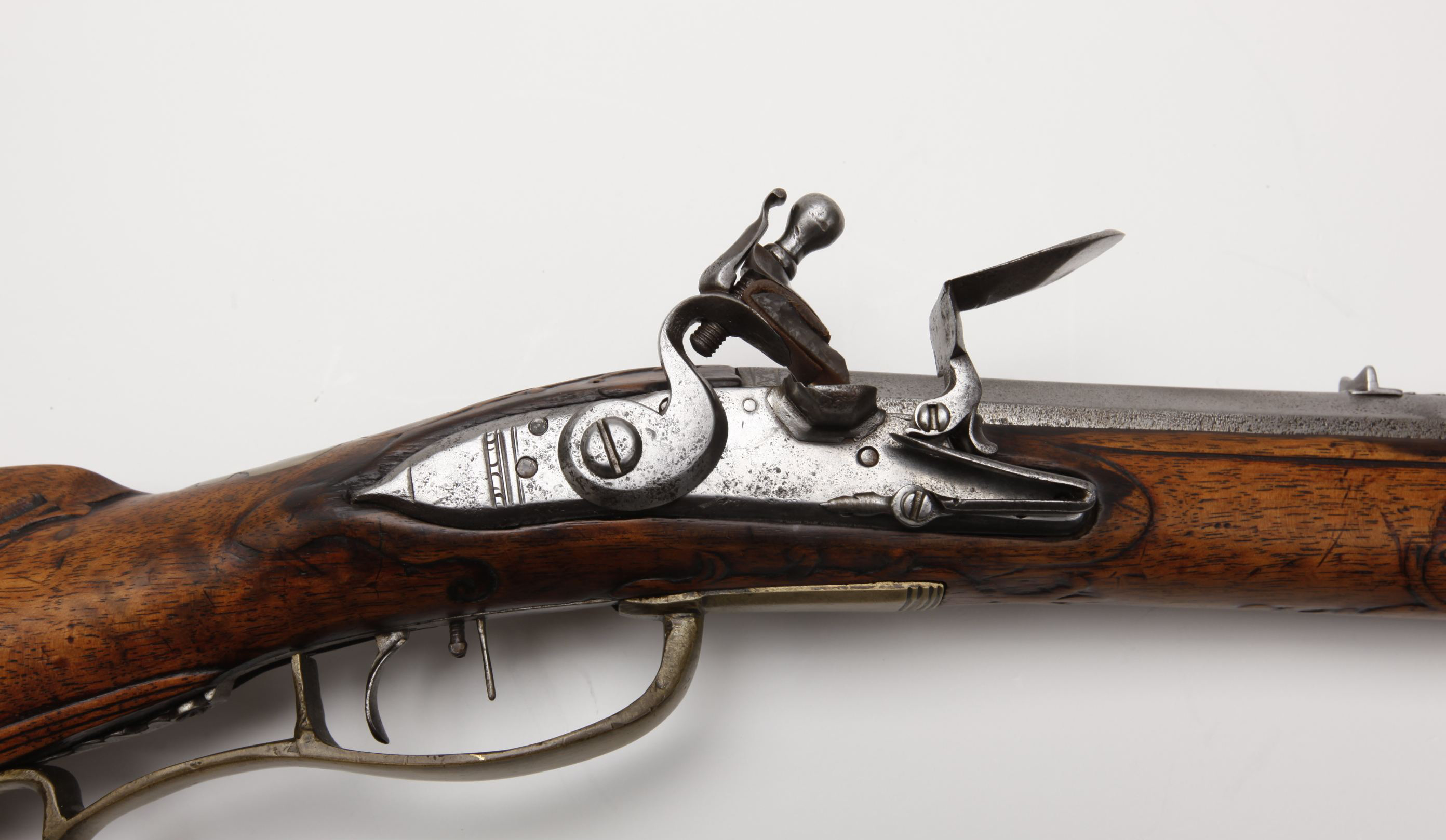Gallery

1 of 1
Spanish Snaphaunce Fowler
Early 17th Century Spanish Colonial Snaphaunce-Lock Fowler (single shot/ muzzle-loading/ black powder/ shot ammunition) This snaphaunce, based on the principle of striking flint against steel to create sparks, originated in Spain around 1600. It was restocked and rebanded in Mexico...
Read more here

1 of 1
Spanish Miquelet Blunderbuss
Both the stock and furniture of this blunderbuss bear pagan motifs with sexual overtones. Mid-17th Century Spanish Colonial Miquelet-Lock Blunderbuss (single-shot/ muzzle-loading/ black powder/ shot ammunition) Originating in Spain circa 1670, this blunderbuss was later repaired in Vera Cruz or Mexico City, where Native Americans had been trained to refurbish firearms...
Read more here
Read more here

1 of 1
German/English Flintlock Jaeger Rifle
The Jaeger rifle was very accurate at longer ranges, but required longer loading time for its patched ball. Circa 1730 English/German Central Colonial Flint-lock Jaeger Rifle (single-shot/ muzzle-loading/ black powder/ ball ammunition) Because of their stabilizing rifled barrels and large caliber, Jaeger (hunter) rifles facilitated effective shooting for professional hunters in Europe...
Read more here
Read more here

 More Like This From Around The NRA
More Like This From Around The NRA



